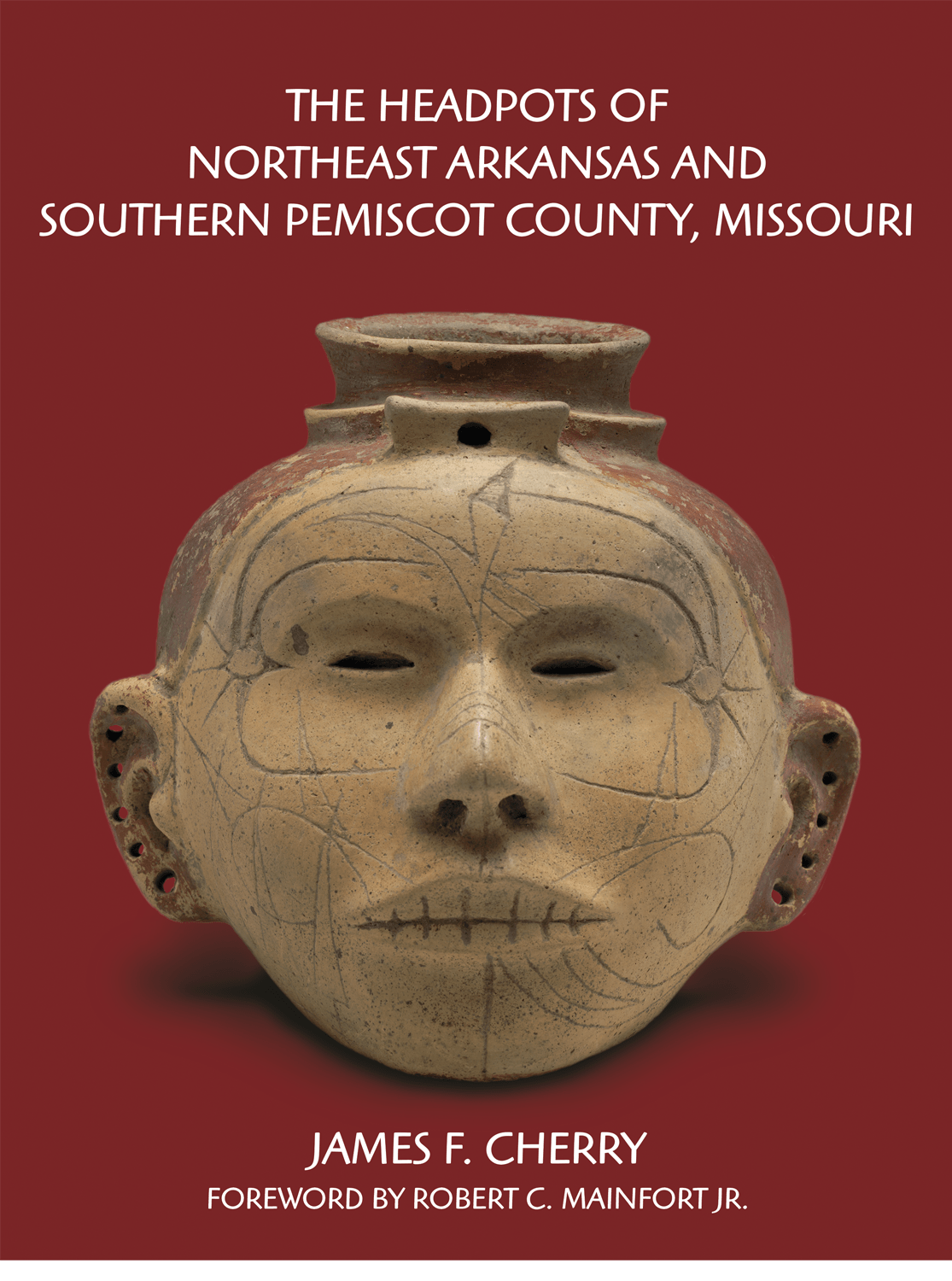In 1981, James F. Cherry embarked on what evolved into a passionate, personal quest to identify and document all the known headpots of Mississippian Indian culture from northeast Arkansas and the bootheel region of southeast Missouri. Produced by two groups the Spanish called the Casqui and Pacaha and dating circa AD 1400–1700, headpots occur, with few exceptions, only in a small region of Arkansas and Missouri. Relatively little is known about these headpots: did they portray kinsmen or enemies, the living or the dead or were they used in ceremonies, in everyday life, or exclusively for the sepulcher?
Cherry’s decades of research have culminated in the lavishly illustrated The Headpots of Northeast Arkansas and Southern Pemiscot County, Missouri, a fascinating, comprehensive catalog of 138 identified classical style headpots and an invaluable resource for understanding the meaning of these remarkable ceramic vessels.
“A volume of lasting value to professional and avocational archaeologists, museum curators, art historians, and collectors of Precolumbian artifacts . . . indispensable to researchers interested in the late prehistory of the Midsouth.”
—Robert C. Mainfort Jr., From the Foreword
The Headpots of Northeast Arkansas and Southern Pemiscot County, Missouri
$65.00
James F. Cherry
978-1-55728-897-4 (cloth)
March 2009
“As informative as it is beautiful . . . an awe-inspiring publication.”
—Arkansas Review
“An essential volume for Mississippian archaeologists . . . [and] those interested in iconography, symbolism, and worldview of these Native American people.”
—Southeast Archaeology
“A must-have reference that will take its place alongside other important books dealing with ceramics and pottery.”
—Prehistoric America
“A phenomenal reference for anyone interested in Native American ceramic sculpture.”
—Missouri Archaeological Society Quarterly
“The word for this book is spectacular!”
—Field Notes
“Jim Cherry has produced a monumental work that will be of inestimable value to archaeologists and those interested in American Indian artifacts and art. The copious, clear photographs, along with detailed descriptions and background information on each headpot, make this a valuable reference that can never be superseded. This is the first chance anyone has had to look at all known headpots at once, and the comparisons of art styles and nuances of design are thought-provoking. Even the stories behind the discovery of many of the vessels are fascinating. Dr. Cherry’s decades of careful research have yielded a book that will be an instant classic, absolutely essential for researchers working in the Mississippi Valley and beyond.”
—Jeffrey M. Mitchem, Arkansas Archeological Survey

